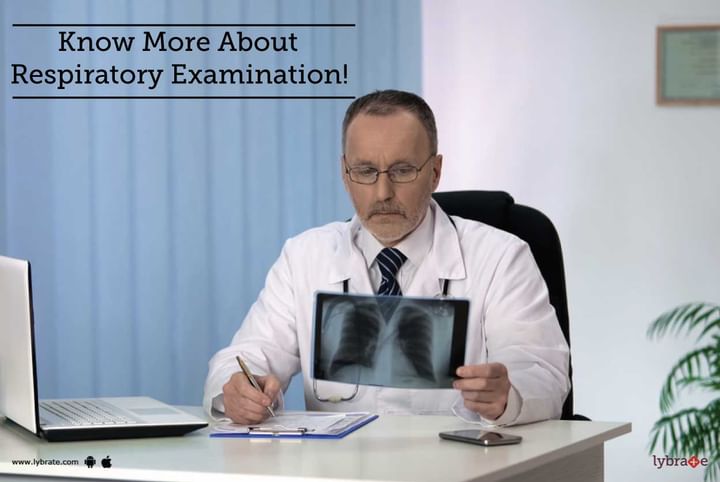Know More About Respiratory Examination!
People suffering from pneumonia, postoperative partial or complete collapse of the lungs, chronic respiratory conditions like Chronic Obstructive Pulmonary Disease, Cystic Fibrosis etc as well as people suffering from neuromuscular diseases can get partial relief by respiratory physiotherapy. If a person is suffering from retained secretions, increased effort to breathe or volume loss, he or she may be referred to Respiratory Physiotherapy.
Respiratory Assessment Of The Patient
A Respiratory Physiotherapist will assess the condition of the patient with the help of Respiratory Assessment or Respiratory Examination. It includes:
-
Auscultation and review chest X-Ray
-
Interpreting arterial blood gasses test and blood tests
-
History of present illness
-
History of past illnesses
-
Details of cough, breathlessness, sputum, chest pain
Other symptoms like headache, fever, CO2 retention, heart failure, peripheral oedema, shivering, palpitations, weight loss, Gastrointestinal Reflux Disease, vomiting and nausea etc.
Respiratory Physiotherapy Techniques -
After the Respiratory Assessment the doctor may prescribe the following:
-
Breathing Exercises
Exercises like Active Cycle Of Breathing Techniques can help in clearing phlegm. Since people in respiratory distress often produce more phlegm than normal, it is essential that this excess phlegm be removed. This can help the person breathe more freely. Removing the phlegm can also help prevent infections in the chest and reduce coughing. It is a set of exercises that together help in establishing breathing control, huffing and deep breathing.
-
Mobilisation
Early mobilization is one of the most important aspects of chest physiotherapy. It includes positioning, active and passive turning, cycling pedals, standing, stepping etc.
-
Manual Techniques
The Physiotherapist may apply pressure on the chest to facilitate airway clearance while keeping the patient in gravity assisted phlegm drainage position.
-
IPPB
It employs a device that helps patients take a deep breath, cough and clear lungs. The device offers short-term and intermittent mechanical ventilation of a positive pressure set by a physiotherapist. The device pushes a mixture of oxygen through a facemask.
-
Suction
Here too the physiotherapist uses a device to suck out excess mucus from the chest and facilitate breathing. Here the cough is stimulated by a catheter and phlegm is sucked out using another catheter.
-
MHI
It is the acronym for Manual Hyperinflation. This procedure is carried out by a Respiratory Physiotherapist to give volume to partially or completely collapsed lungs.
-
BiPAP or CPAP
The device delivers pressurized air into the patient's airways through a facemask. The pressure of air prevents collapse of the throat muscles and reduces airway obstructions. In essence, they allow patients to breathe more freely and regularly.
Conclusion
Right Respiratory Assessment or Respiratory Examination is crucial to applying the right physiotherapy techniques. Right techniques may help patients breathe more freely and avoid respiratory infections.



+1.svg)
